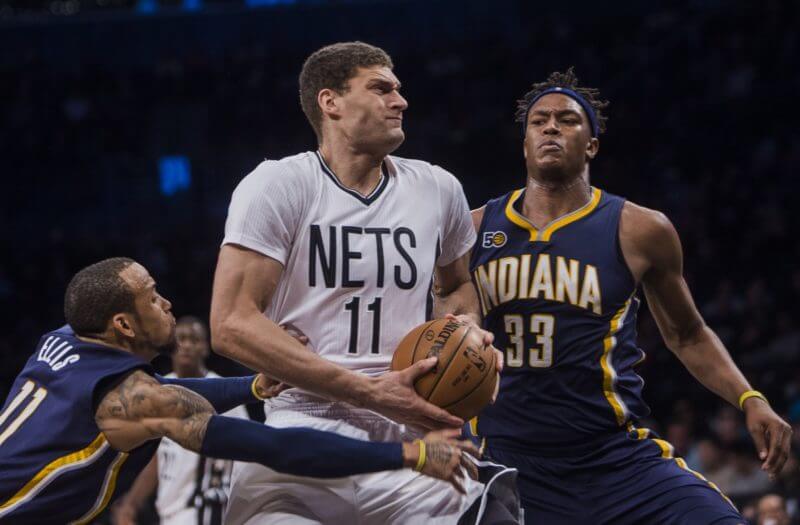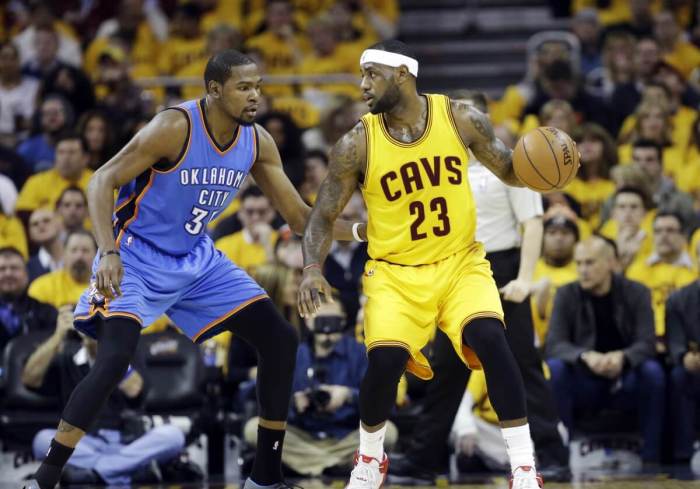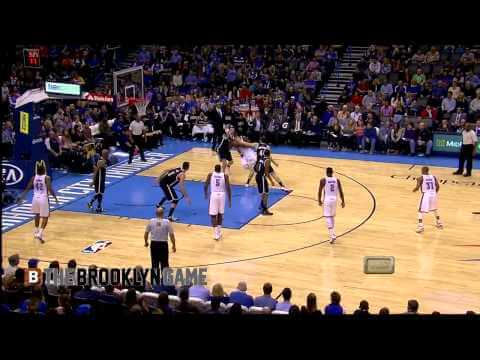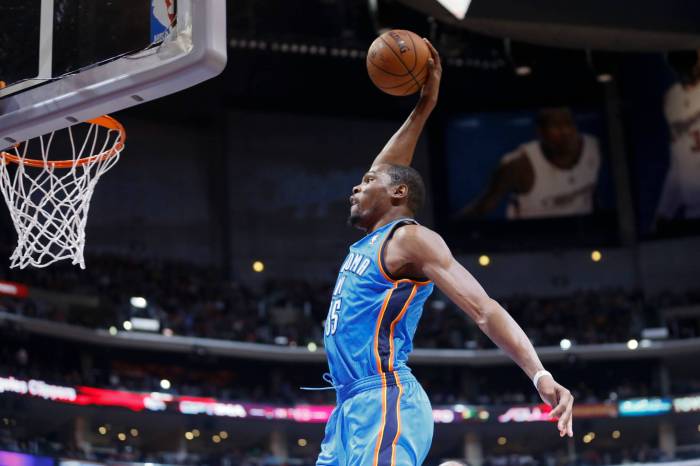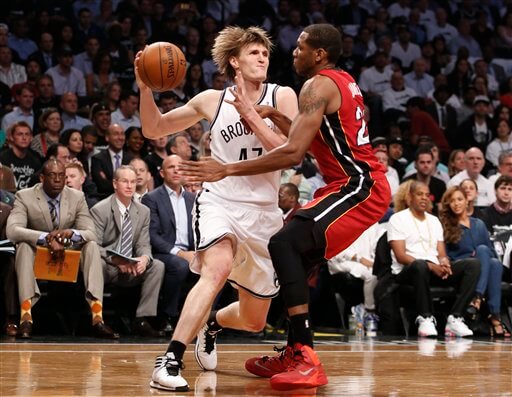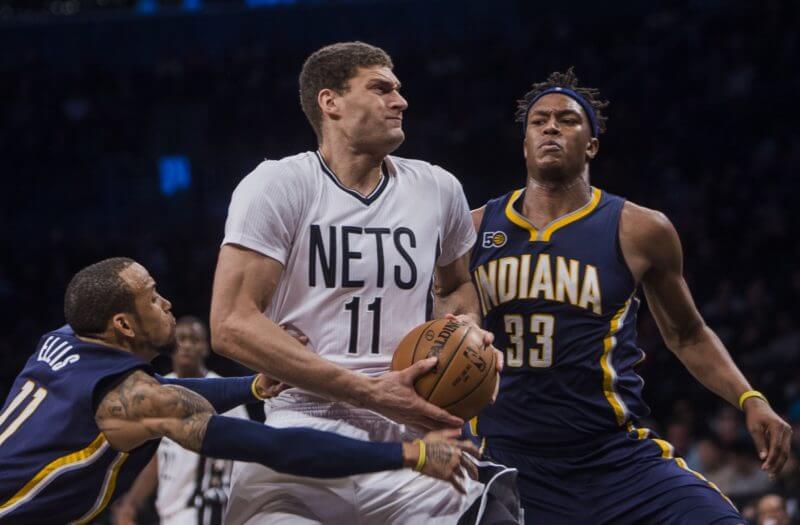
Marks Madness: Understanding The Nets’ Draft Pick Position
March Madness is here! The NCAA’s most profitable (for some) venture has already seen first round action. Brackets have been busted and stocks have and will rise. (Except for Lonzo Ball.) Back in the NBA, teams are gearing for playoff runs and the inevitable the-Warriors-are-in-trouble takes are starting to heat up.
For the Brooklyn Nets, the shift should be towards scouting the impending NBA Draft. Yes, with the return of Jeremy Lin, the team has been exciting as of late but there’s little to play for now. With the NCAA Tournament, both Nets fans and executives may be imagining the tournament’s top performers in Brooklyn black and white, but they’ll certainly need some athletes to fall.
At the trade deadline, the Nets added to their draft pick stash by trading Bojan Bogdanovic and Chris McCullough to the Washington Wizards for their 2017 first round pick, Andrew Nicholson, and Marcus Thornton. This move was all part of general manager Sean Marks’ strategy of accumulating talent to replace the draft picks forfeited in Brooklyn’s failed win-now era.
The Nets could potentially have four selections in this year’s draft, two in each round. From the Wizards, that pick is lottery protected (1-14) and, of course, the Nets will swap picks with the Boston Celtics. The Celtics’ Danny Ainge stood firm at February’s trade deadline rather than going for it all by acquiring Paul George, Jimmy Butler, or DeMarcus Cousins.
Don’t you wish the Nets had that problem?
In the second round, the Nets do not have their own selection with what likely is the No. 31 pick headed to Atlanta, the final piece of the Joe Johnson trade. Yeah, seriously. Lin was months removed from Linsanity when the Johnson trade occurred, so, yeah, it’s been a while.
Because of the Celtics’ first-round swap, the Nets will acquire Boston’s second round selection, protected 31-45. Additionally, the Nets do have a chance at acquiring the Indiana Pacers’ second rounder if they miss the playoffs. As of today, the Pacers are in a race for the 6-8 seeds in the Eastern Conference and the Bulls, Pistons, Bucks, and Heat are all within five games of each other in the win-loss column. If the Pacers slide, the playoff seeding may come down to the last game of the season.
Add those potential picks to a young group in Isaiah Whitehead, Caris LeVert, and Rondae Hollis-Jefferson and the Nets may be one of the league’s youngest teams in 2017-2018.
Scouting the League
Hardcore Nets fans will probably check the Wizards and Celtics’ box scores frequently and watch the NCAA Tournament religiously. If the NBA season ended today, the Nets would own the 24th and 26th picks. But with around 15 games left for most NBA teams, today’s draft position could change drastically. Injuries, inconsistency, and pre-playoff rest could alter the Nets’ draft positions.
The Celtics are currently the second seed in the East and the fifth-best team in the NBA — but the healthy L.A. Clippers or the sneaky good Utah Jazz could surge and overtake Boston. That would bump the Celtics down a spot to 25th or 24th.
The Wizards have solidified their position as the third seed in the Eastern Conference, holding an outside chance of catching the Celtics above them as well. With Bojan Bogdanovic — we miss you, Bojan! — Washington has been on a tear as of late. Kyle Lowry’s injury may have locked Toronto at the fourth seed and the Raptors are currently 2.5 games back of the D.C.-based side.
Most realistically, the Nets could own the #24 and #26 picks in this year’s draft. At best, they could end up with picks #23 and #25 under several cataclysmic events. There’s a possibility that the Nets will have back-to-back draft picks for the first time since 2006, where they selected New Jersey Net immortals (and UCONN teammates) Marcus Williams and Josh Boone, but more on that later.
Who should the Nets target in the draft?
The 2017 draft is being touted as one of the most talented in years, even one that may be carrying several potential All-Stars. Unfortunately, picking in the 20s decreases the likelihood of drafting a franchise player but, as we know, Sean Marks has a plan and vision to retool the Brooklyn Nets. Marks has shown confidence in reaching for talent and upside — so where do they go from there?
Going forward, the Nets’ greatest depth is in their backcourt. Jeremy Lin, Isaiah Whitehead, Joe Harris, and Caris LeVert all have guaranteed contracts next season. Sean Kilpatrick, Spencer Dinwiddie, and K.J. McDaniels have non-guaranteed contracts next season and it’s possible that the Nets will retain all three. The Nets may also add to their depth in the restricted free agent market, with wings Kentavious Caldwell-Pope, Otto Porter Jr., Tim Hardaway Jr., Ben McLemore, and Jonathon Simmons all worth an offer sheet.
The Nets may target a big man with at least one of the first-round selections. Length and athleticism are two traits that are missing from the Nets on both ends of the floor. They could target a sweet shooting big man to pair with (or replace) Brook Lopez should the endless rumors ever come to fruition. UCLA’s T.J. Leaf and Syracuse’s Tyler Lydon fill that void and are slated to be late first round picks.
A long, athletic big could pave the way for the Nets’ future as the franchise’s defensive style requires athleticism to keep up against pick-and-roll heavy teams. But outside of Lopez, the team lacks a lengthy rim protector. On the offensive end, Trevor Booker, an undersized power forward, is the only Net that plays above the rim and crashes the glass.
In San Antonio, center Dewayne Dedmon is an anchor for the league’s best defense. Elsewhere, Rudy Gobert and Hassan Whiteside were two relatively unheralded talents in the draft, yet they are two of the league’s best defenders. While drafting a similar player to that trio may not catch headlines, it could pay dividends when the Nets turn their fortunes around.
But with two picks in the first round, the Nets may choose the best player available. This team is several years away from being at full strength and may see another summer with high roster turnover. DraftExpress has the Nets selecting Duke big man Harry Giles and the aforementioned Leaf with their picks. So Marks’ strategy may be to draft the player with the brightest future, regardless of position. Again, the Nets are trying to add as much talent as possible… from anywhere.
The Historical Perspective
In NBA drafts from 2006-2016, three players selected between 20-30 became NBA All-Stars: Rajon Rondo, Kyle Lowry, and Jimmy Butler. In 2006, Rondo and Lowry were selected at #21 and #24, respectively. Sandwiched between those two All-Star point guards were two New Jersey Nets selections: Marcus Williams and big man Josh Boone, both of whom did not play in the NBA past their rookie contracts. Butler was selected with the #30 pick in 2011, who was then a raw, but intriguing, player out of Marquette. That Nets selected Marshon Brooks five spots earlier, from Providence.
I’d like to request a sad song to be played on the world’s smallest violin, please.
While the 20-30 spots may not have produced many NBA All-Stars (a 2.7% chance since 2006), it has produced several above average starters. Rudy Gobert, Nicolas Batum, Rodney Hood, and Serge Ibaka were all selected at the end of the first round of their respective drafts. The back end of the first round has also produced solid NBA role players as well, such as DeMarre Carroll, Mason Plumlee, Taj Gibson, and the Nets’ own Trevor Booker– but, of course, there were also players that did not pan out too.
While the Nets may not select the next Jimmy Butler or Kyle Lowry this June, they have a decent chance of drafting a productive piece.
The Value of Draft Picks
When speaking to Yahoo!’s Adrian Wojnarowski after the trade deadline, Marks explained the value of the Nets’ two first round picks:
https://streamable.com/h5zzu
The sheer flexibility of multiple picks is a nice offseason option, even if they don’t use them. If the Nets see a high upside prospect outside of their range, they could try to move into the teens by dealing their picks. In the 2015 draft, the Wizards did that by trading their 19th pick and future second round picks to the Atlanta Hawks for the 15th pick (a Nets pick swap, ironically). The Wizards drafted Kelly Oubre with that selection, another athletic player still trying to work things out.
The Nets could even buy a second round pick. Philadelphia and Boston have multiple second round picks and limited roster space.
Marks could trade a Nets pick this year for a selection in 2018, where they currently own no picks in the first or second round. While the 2018 draft may not be as highly rated as 2017, having a pick would maintain the Nets’ flexibility after June 22nd.
After a disappointing season, the NBA Draft is a glimmer of hope for Nets fans. While the team may not have their own draft pick, Marks and his staff will be active and systematic during the draft, using their acquired picks and possibly trading for even more. March Madness is the time for irrational hype and rays of hope, but June 22nd can only come so soon.

